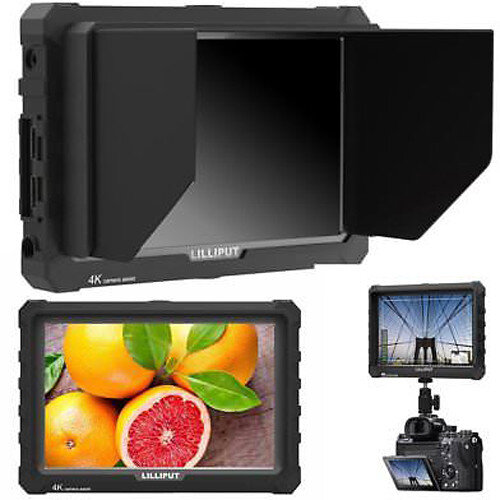The Darn LCD is Too Small!
/I’m getting older. So are you. Getting older is better than the alternative but it means that I shake a bit more and don’t see small stuff quite as well. Candidly, using the LCD on the back of my cameras to check focus is a non-starter for me any more.
If you have the same challenges, consider buying yourself a display that mounts to the top of your camera. I am recommending the Lilliput A7S which is an incredible 4K capable display that is 7 inches in diameter, lightweight and runs on rechargeable batteries (Sony NP-970 or Canon LP-E6).
Connecting an external display is easy. Just enable HDMI out on your camera and connect that port to the HDMI in on the display. This unit comes with Mini HDMI to HDMI, but if your camera uses Micro HDMI, you will need to order one of those cables separately. Check your camera manual to find out which size HDMI port your camera has.
Running off batteries is very convenient. The big NP-970s last longer but are quite a bit heavier. The LP-E6 batteries are smaller, but don’t last as long, yet take up less space in your bag or pocket and also weigh less.
None of my cameras have articulating rear screens, so using a display like this on a ball head mount, like the unit displayed here is very flexible. This unit is a Vello and is available through B&H Photo Video although you can likely find cheaper units on Amazon or some other jobber site
When choosing batteries, you do not need to buy name brand Sony or Canon batteries as the Lilliput is not looking for special chips to indicate that you are using the OEM battery as is demanded by many cameras today. You can certainly purchase Canon or SONY branded batteries but you will be paying more than you actually need to do.
These displays also work if you are shooting video. It includes vectorscope, colour bars, false colour, peaking and a histogram function so you can be sure of your video quality while you are recording. It is not a field recorder. If you want a display that is also a field recorder, look to an Atomos Ninja or Blackmagic Design Video Assist
Atomos Ninja V
Blackmagic Design Video Assist 4K
Both of these units are field recorders meaning that while they provide display functions, they also incorporate direct recording and at higher quality levels than your camera likely does directly. They also record locally. The Ninja V records to an SSD drive that you install into the removable case. The Video Assist records to high capacity SD-XC cards. Personally I prefer the SSDs because I get more storage for my dollar, but you should choose what’s right for your use cases.
However, since the majority of still photographers do very minimal video, you could be just fine recording to the memory card in your camera and that means that you don’t need to spend on a field recorder. A display is likely all that you need.
There are five inch variants as well. I have an older SmallHD Focus 5 that is really nice, but if I were spending today, I would definitely go for the larger 7” display.
Do you have an idea for an article, tutorial, video or podcast? Do you have an imaging question unrelated to this article? Send me an email directly at ross@thephotovideoguy.ca or post in the comments. When you email your questions on any imaging topic, I will try to respond within a day.
If you shop with B&H Photo Video, please consider doing so through the link on thephotovideoguy.ca as this helps support my efforts and has no negative impact whatsoever on your shopping experience.
If you find the podcast, videos or articles of value, consider clicking the Donation tab in the sidebar of the website and buy me a coffee. Your donation goes to help me keep things going.
I'm Ross Chevalier, thanks for reading, watching and listening and until next time, peace.












